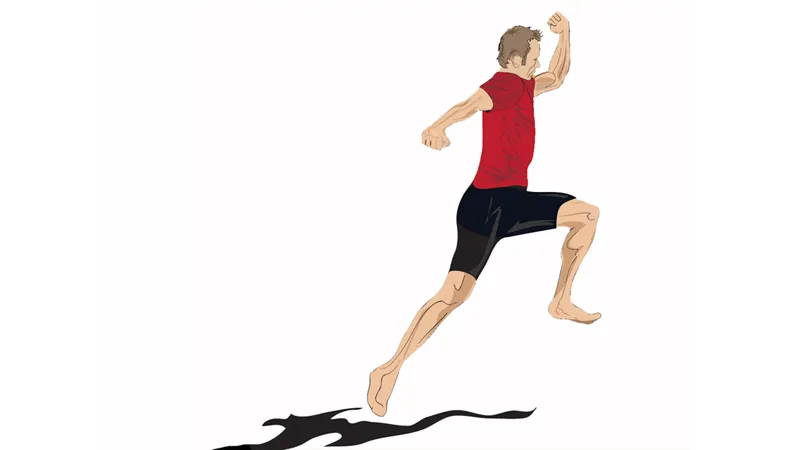Aside from the explosive exploits of track sprinters or the finishing straight effort of a green jersey contender, cycling isn’t usually seen as a ‘power sport’.
However, whether you’re sprinting out of a corner in a criterium, bridging a gap to a group in sportive or nipping through a gap in the traffic, you’ll need power. And how can you get that added bang? Plyometrics.
Plyometrics are exercises that train your body to adapt to sudden loading, followed by an explosive response to that load. They’re most widely used in sports such as rugby, basketball and football, which require players to sprint and leap. They’re also used by sprinters to develop the power necessary for explosive starts.
Adding plyometric drills to your training will make you a better cyclist – even if you aren’t taking on Mark Cavendish. For a start, we tend to spend hours at a time fixed in a crouched position, so training off the bike increases our overall robustness and makes us less prone to injury.
In particular though, impact work can have a very beneficial effect on bone density – something cyclists have been shown to be lacking. Finally, you’ll notice that the routine below will give you a great cardiovascular workout into the bargain.
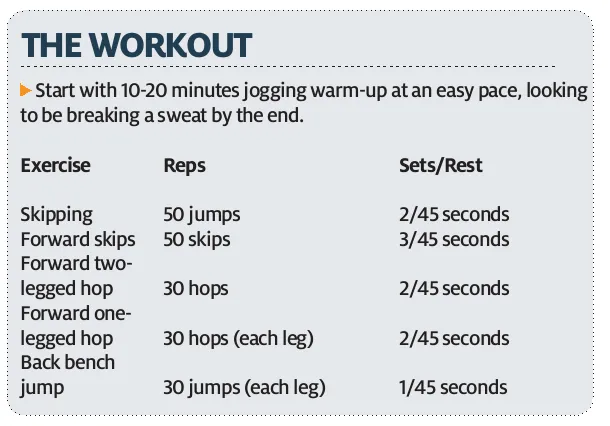
If you include regular resistance work in your training then you should be able to move straight into the plyometric work. If not, then spending three or four weeks doing a couple of sessions a week of bodyweight exercises such as squats and lunges will set you up.
Even if you have the base strength required, plyometric training can be quite tough on your body at first. Perform these exercises once a week – but never back-to-back with a hard race or training session. It’s also vital to perform the routine on a forgiving surface such as grass or matting, not on concrete or paving.
Skipping

Using a speed or skipping rope, this is a warm-up for the more demanding exercises to come. Aim for a light, controlled double-footed jump, keeping on your toes and only jumping as high as you need to in order to clear the rope. Keep your head up, look forwards and ensure your upper body is relaxed. The movement of turning the rope should come just from your wrists. Practise skipping and it’ll soon become second nature. It’s worth mastering, because it’s a great do-anywhere exercise.
Forward one-legged hops
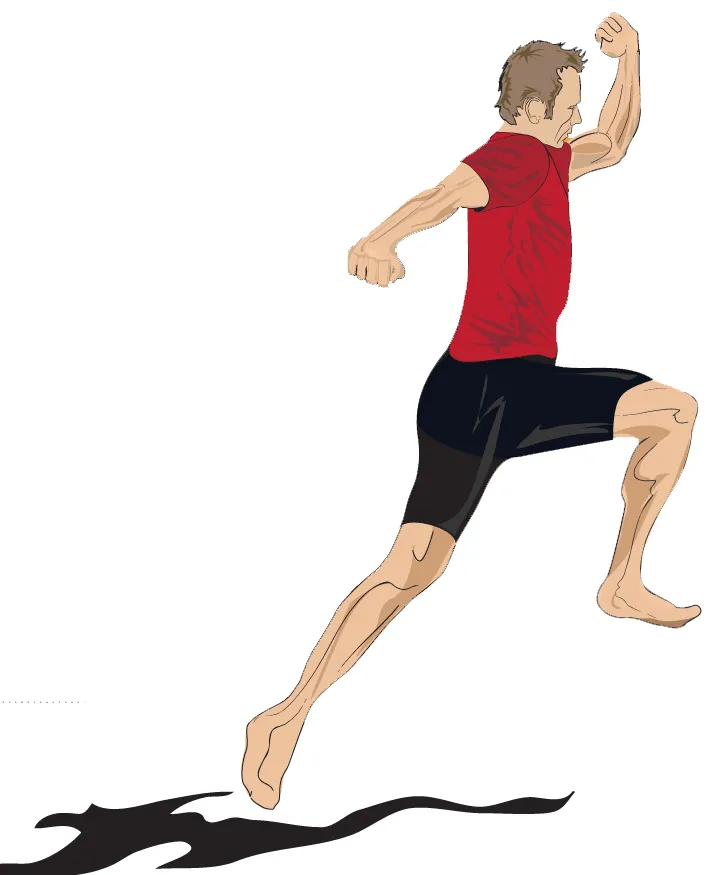
Single-legged hopping is a demanding exercise, so don’t be surprised if you struggle to complete both sets of 30 reps per leg. The keys are to maintain a fast and fluid foot strike and not to allow your hopping leg to collapse and lose forward impetus. Keep your head up and your core strong, while using your arms to maintain balance and drive. As with the two-legged hops, try to cover as much distance as possible in the 30 reps.
Back bench jump
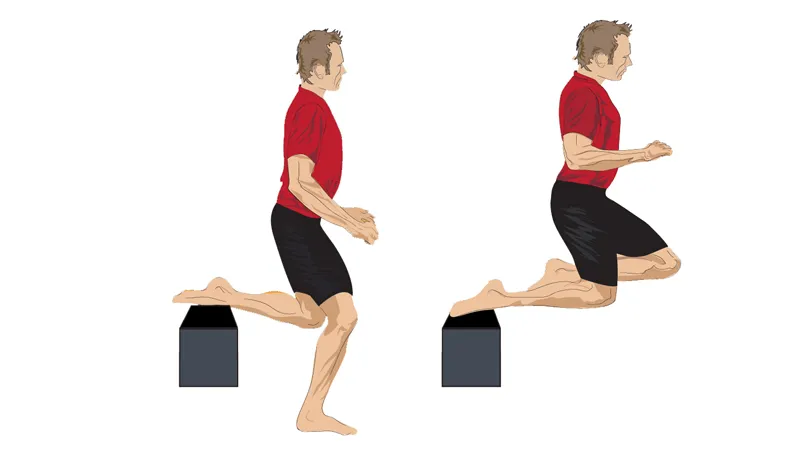
Standing in front of a bench, box or step, place the top of one foot on it behind you. Keep your head up and torso upright. The aim of this drill is to flick your standing leg towards your backside. As your foot returns to the ground, imagine it’s on hot coals and flick it back up again as quickly as you can. Continue for the 30 reps or until your form starts to suffer and speed drops.
Forward skips
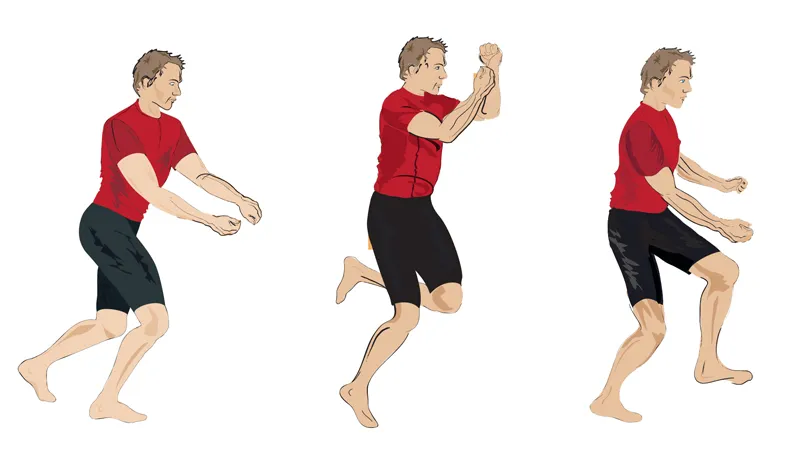
Imagine merrily skipping through a flowery meadow on a summer’s day without a care in the world and you’ve got this drill. You’re aiming for a light, bounding stride, using arm swings for momentum and minimising contact time with the ground.
Forward two-legged hops
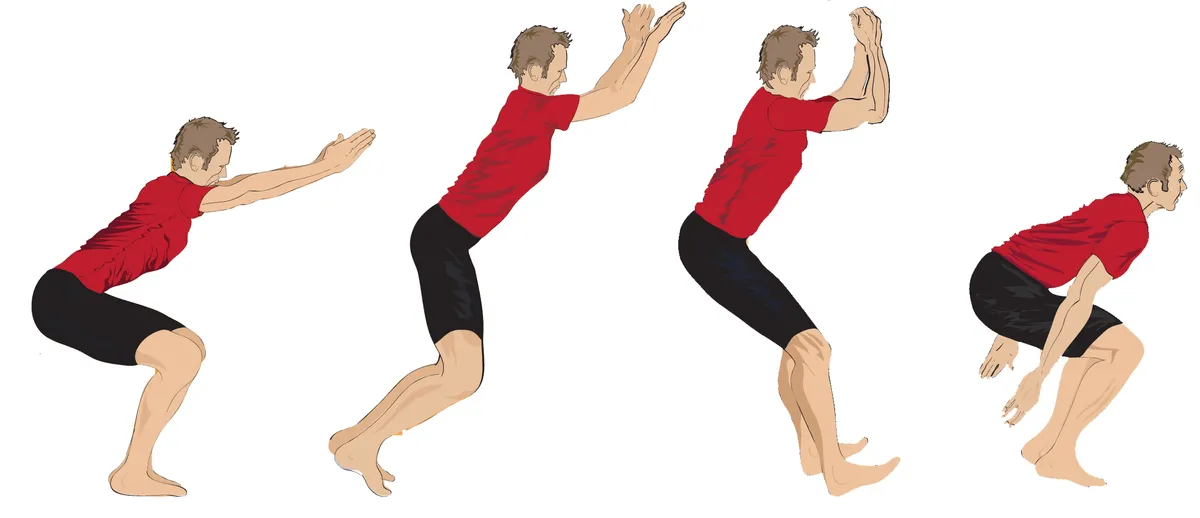
‘Impersonating a frog’ is the best way to describe this one. Start with your feet shoulder-width apart and go into a squat. Swing your arms back and rock forwards onto your toes, then swing your arms forwards and up and explode forwards, aiming for as much height and distance as possible. Land with soft knees straight back into a squat position and repeat the process. Note how far you cover in the 30 reps and try to beat it the next time.

